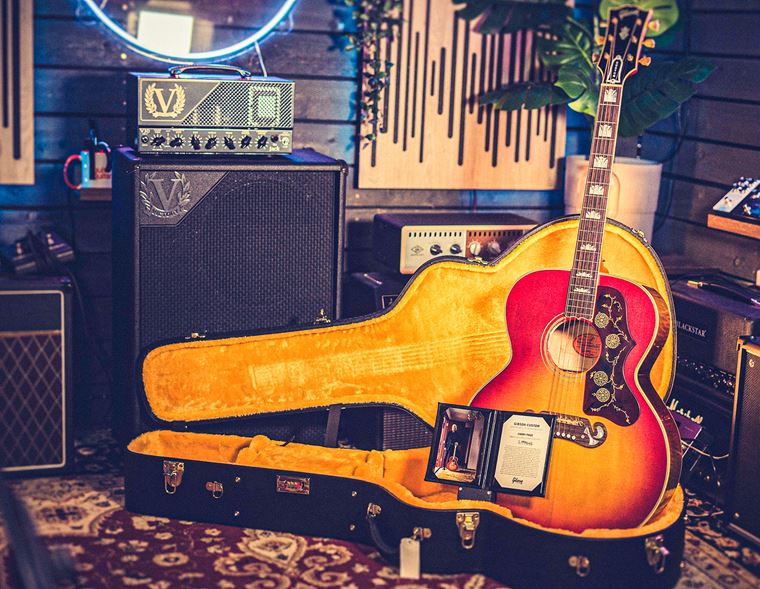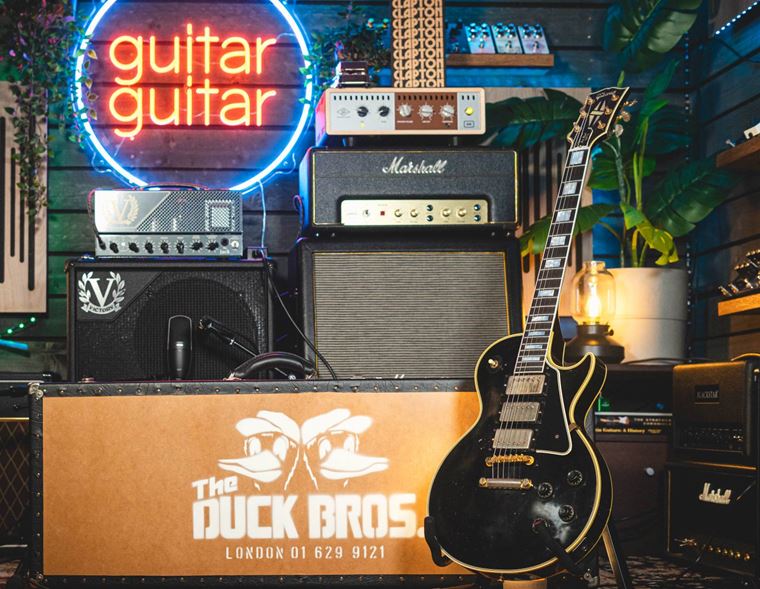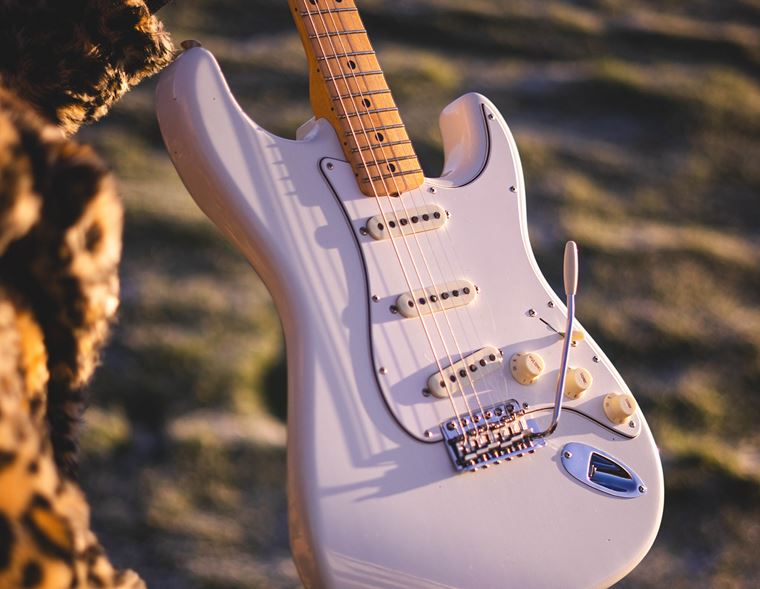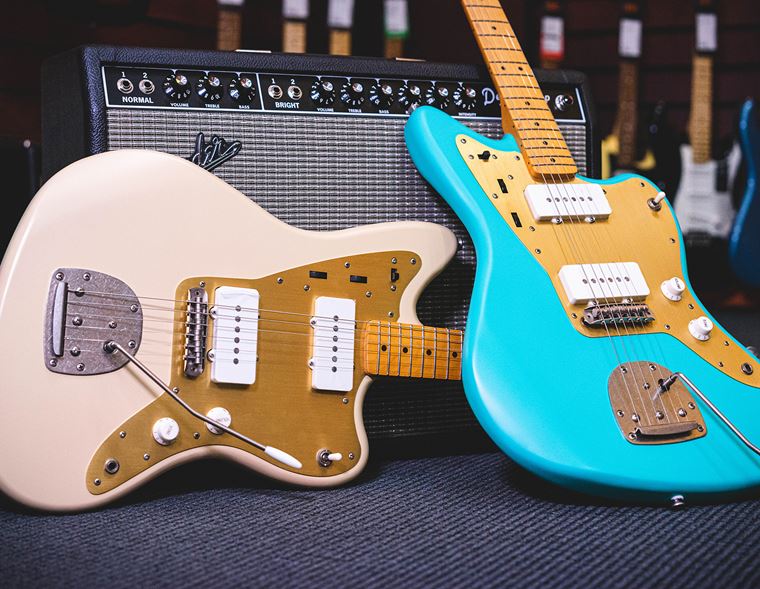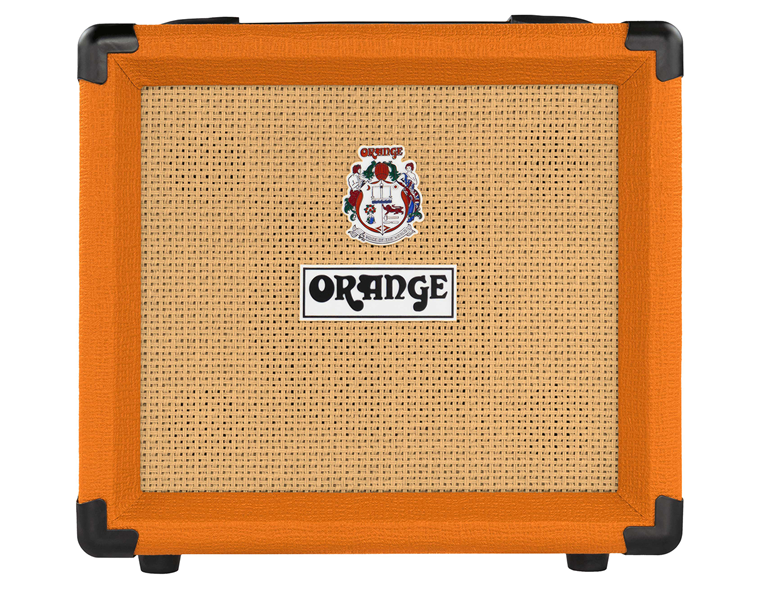Cheap vs Expensive Pedals
Published on 14 December 2023
These days, we are quite spoiled as guitarists. For effects, we pretty much have the entire history of guitar pedals available to us at all price points, in endless variations. Not only that, since everything uses the same type of connecting cables etc., we’re free to use whatever we want in our quest to find that perfect tone.
Naturally, there are a wide range of prices. More so than ever before, we now have lots of very cheap pedals out there - often ‘nano-sized’ - that can be had for under £30 a piece, and purport to offer up just as good an experience as with more expensive units.
At the other end of this, we have boutique effects pedals, generally hand-made and bearing fancy looking silk-screened artwork. These effects are generally thought of as the best that money can buy, both in terms of sound and build.
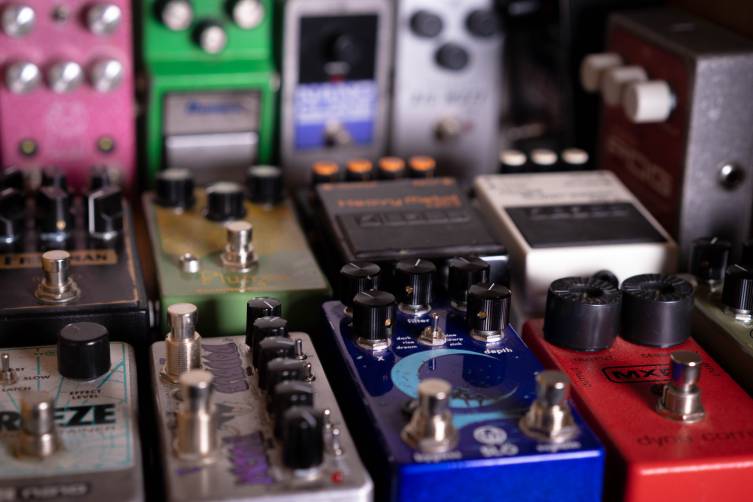
Are either of these claims particularly true? I aim to talk to you about that today. From my years as a sales assistant on the guitarguitar shop floor, I’ve plugged in literally thousands of effects pedals for customers of all types. Where other bloggers might read something online and repeat it, I’ve had the opportunity to actually get my hands on this stuff and try it out. As a gigging player, I have long term experience of a large number of pedals from different brands, so that becomes part of my knowledge base too.
Why are some pedals so expensive? Why doesn’t everyone just use cheap pedals exclusively? What’s best for you? These are all questions I will tackle gamefully for you today!
If you’re interested in pedals - either cheap or expensive - then this blog is for you!
Contents
- Cheap Pedals - What are They?
- Benefits of Cheap Pedals
- Drawbacks of Cheap Pedals
- Expensive Pedals - What are They?
- Benefits of Expensive Pedals
- Drawbacks of Expensive Pedals
- Should I Buy Cheap or Expensive Pedals?
- The Hype Market
- The Bottom Line
Cheap Pedals - What are They?
When we talk about cheap pedals, there are two basic groups here. One is the proliferation of small metal nano-sized pedals that have flooded the market, and the other is basically Behringer copycat pedals. The second of those two types is a pretty easy thing to talk about: Behringer pedals are based closely on BOSS effects, whilst offering theirs at an extremely low price. How do they manage this? Most significantly, the pedals are plastic rather than metal, and have cheaper components, connectors and so on. The sounds are often very good, so if you don’t gig heavily, some of these pedals will serve you well, as long as you’re careful with them. I’ll talk more about this later, but that’s it in general terms.
The other main type of cheap pedal are these nano/micro pedals, and they are a pretty interesting prospect for a lot of people. Made with a metal chassis, they appear to be tougher than the plastic pedals, and they promise all kinds of quality sonic goodness for very little cash.
They are too small for batteries to fit, so you must use a power supply for this type of pedal. They are very small, so it’s an easy thing to fit them onto a busy pedal board. On the face of it, there are lots of pros to choosing these. Brands like Mooer, Landlord FX and NUX all offer these pedals, with some being slightly larger or smaller. Many of them use the time-honoured industry practice of naming (and styling) their pedals in a way that deliberately implies what they intend to sound like: the NUX Edge delay is so blatant in its reference, it even offers a drawing of a certain Irish guitarist’s head on the pedal! No, it’s not official, haha!
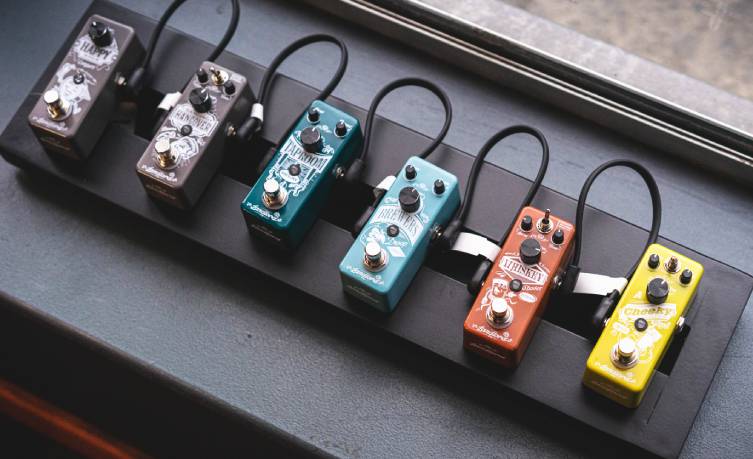
Benefits of Cheap Pedals
- Low cost
- Cheap way to experiment with new sounds
- Great for backups
- Cost-effective way to build a second board
Drawbacks of Cheap Pedals
- Sonically less sophisticated, sound may not compare to more expensive equivalent
- Compromise in components, wiring, connectors and pedal switch means potentially less reliable
- No real resale value
- Relatively anonymous, both sonically and as a product
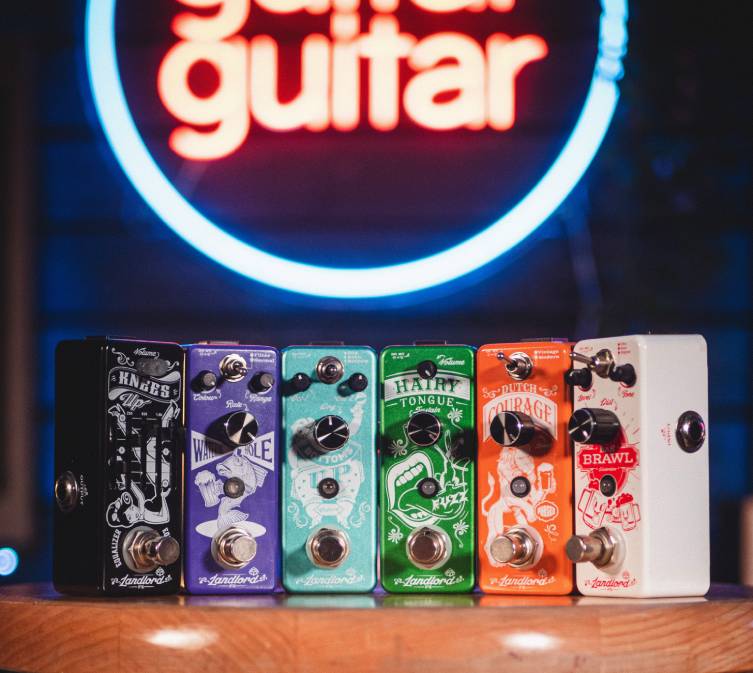
Expensive Pedals - What are They?
Expensive pedals, without being glib and saying ‘pedals that cost lots of money’, also fall into two main categories, at least when talking about new pedals. The first category would be what I’d call ‘complex pedals’, which is by no means an official term! I mean pedals like the Eventide H90, or the Strymon Timeline: pedals that have lots of technology within them, tons of processing, and cannot really exist in any realistically cheap form. These are cutting edge effects and they are normally of the modulation and ambient variety. Generally, these types of sounds need more tech and components in order to function (back in the day, you’d need whole rack units for this type of stuff) so their expense is at least partially related to that.
The other type of expensive pedal is the boutique pedal, which is a whole universe in itself. Boutique pedals are (generally) hand made in smaller batches. They contain high quality components and they are often more unusual in terms of the sounds they create.
Many boutique effects pedals have elaborately decorative graphic designs on the chassis too, but that’s hardly a ‘rule’ as much as an observation. Boutique pedals can be limited in numbers - or at least there can be limited versions of a given pedal - so collectibility is a factor too.
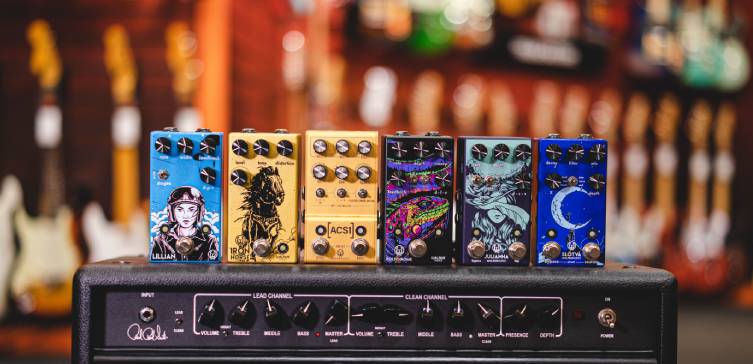
Boutique effects can be simple overdrives or they can be complex effects that there are no real categories for (Earthquaker’s Rainbow Machine springs to mind), so they are grouped together more in their ethos, build and lower numbers. Boutique companies include Walrus Audio, Wampler, EarthQuaker Devices, Old Blood Noise Endeavours and Keeley. As you can probably tell by the names, these brands are as much about personality and branding as they are about their products. That’s characteristic of the boutique market in general.
Benefits of Expensive Pedals
- Best quality sound available (generally)
- Interesting effect variations that are often not available anywhere else
- High grade parts that are often hand-wired
- Interesting and fun designs
- Sound options and parameters that go further/deeper than cheaper pedals
- Relative exclusivity
- Collectibility
- Good resale value
Drawbacks of Expensive Pedals
- The cost starts high and only goes higher
- May require multiple specialist power supplies, depending on the effect
- Potentially harder to fix (if the builder has covered the circuit in epoxy resin ‘goop’ as many do)
- More of a risk at gigs from spilled drinks etc than cheap pedals
- Harder/more expensive to replace if faulty
- No guarantee that it will be significantly better than a standard pedal, just because of its price or association
- If you buy REALLY niche pedals, they may end up difficult to resell
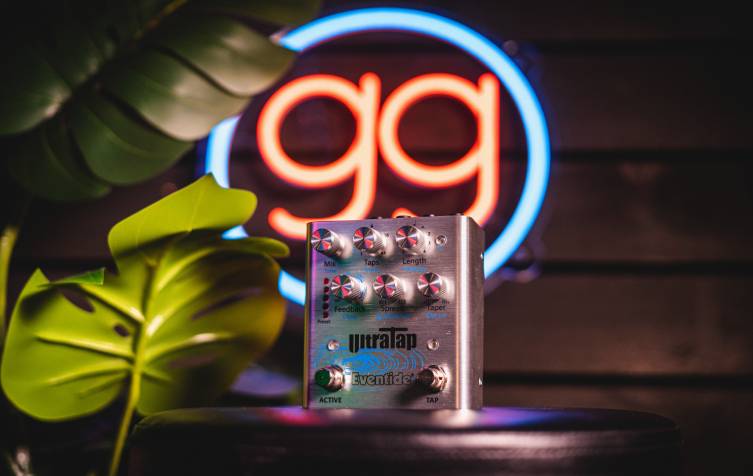
Should I Buy Cheap or Expensive Pedals?
That’s the pros and cons of each as I see it, and so it’s a very varied field to play on. Should you buy cheap or expensive pedals? That’s difficult to say, but let me work through a few situations with you:
- If you pay at home and want to have some fun with pedals, it’s fine to buy cheap ones
- If you have some pedals already, and want to experiment with different sounds, it’s fine to buy cheap pedals
- If you need some backups to quickly stick into your board when another pedal goes down, a cheap one will get you through the gig
- If you use lots of pedals and have specific sounds to aim for, it’s likely that you should buy more expensive pedals
- If you gig lots, and rely on your pedals for sounds, go for the best quality you can afford
- If you want sounds that are not ‘run of the mill’, you may need more expensive pedals
The Hype Market
When it comes to the subject of pedals and value, the market seems to be particularly susceptible to hype. There must be some sort of equation that includes scarcity, artist-association and thrill-of-acquisition, because we do see trends for certain effects coming and going all the time.
The obvious example is with the Klon Centaur, which I’ve spoken about plenty of times in various blogs. For those who don’t know, the Klon Centaur is a low-to-mid gain overdrive that was hand built by one guy, Bill Finnegan, in the 90s. He quit in 2008, but even by then, his pedal had ascended into the ranks of mythology, thanks to a number of high-profile users (John Mayer, Jeff Beck etc) singing their praises at the miraculous things this pedal did for their tone.
Now, let’s be fairly blunt here. The Klon Centaur is a nice sounding overdrive pedal. It most certainly is, but it’s nothing more than that either. Even so, as soon as Finnegan stopped making them, the prices rocketed to dizzying heights. Worldwide, there were only ever 8000 made, and you’ll pay roughly that in pounds if you want one today. What has made this happen? The guitar.com website probably put it best when they said: "The Klon Centaur is either the greatest, most useful overdrive ever made, or the worst example of guitarists losing all sense of perspective about how much good tone should cost."
And here’s the rub: nowadays, there are actually loads of pedals out there that will give you that supposedly inimitable Klon sound, for a whole lot less cash! One of my favourites is the Electro-Harmonix Soul Food, which is priced at well under a hundred quid, and is also made in the USA! This is the point at which you, as a pedal fan and buyer, need to let your ears into the game, and maybe not believe so much hype. There are now loads of pedals that claim to make the Klon Centaur overdrive sound. You can often tell them by their design or title, as is the way with pedal culture these days. The Wampler Tumnus is a good example, since it uses similar colouring and references a centaur character in the title (Mr Tumnus was the centaur in The Lion, the Witch & the Wardrobe). The pedal world is full of this kind of thing!
There’s another chapter to this story. Two or three years ago, the JHS (a boutique American pedal brand) Youtube channel highlighted how much the Digitech Bad Monkey - an unloved, discarded ‘so what’ overdrive pedal from the 1990s - actually sounded like a Klon Centaur.
JHS had a Klon on hand to compare, and right enough, the Bad Monkey was indeed a good match for that sound.
As a result, the market was flooded with Bad Monkeys, as guitarists across the world realised they had one stashed in their garage, ignored for twenty years. Prices went from £60 to £600 for a used pedal in days, and people fell over themselves to buy them.
What had changed about the Bad Monkey? Not a thing. They’d always sounded that way. It’s just that nobody had made the connection to a Klon since nobody expected the Bad Monkey to sound like that, and most of us do not own an 8 grand overdrive pedal to make the comparison. So, that uncared for, uncool overdrive ended up being the hottest thing in the market for a while. It all died down eventually, but the point is, people based the value of the effect not on the effect itself but on the reputation or association of that pedal with something that’s perceived to be great.
It happened before, when players realised that a cheap Danelectro Fab Tone distortion was effectively the same circuit as a boutique Fulltone O.C.D.pedal, a real favourite at the time. This could happen again, at any time, to any pedal. Someone just has to notice it and make the connection.
The Bottom Line
So, what’s the big takeaway here? I’d say this: buying pedals is often not about the sound alone. In fact, it’s almost never just about the sound. All of these other factors that I’ve touched on today play a greater or lesser part in your decision to purchase a pedal. Let’s run down those factors once again:
- Price
- Quality of sound
- Quality of build
- Components
- Desirability
- Scarcity
- Practical factors (size, form etc)
- Artist Association
- Reputation
For all of those factors, you’ll know by now which ones conform more to the cheaper pedals and which are more to do with the expensive pedals.
As for what you should do, I’d suggest this, and it’s not going to be much of a revelation: go with your ears and your wallet. A good mix of cheap and expensive pedals is an absolutely acceptable way to go, spending the cash on what you judge to be the most important effects, and going ‘cheap and cheerful’ on the sounds you either use less or haven’t tried out much. A cheap overdrive and an expensive delay pedal might make you sound like a million bucks, whereas a cheap delay pedal might actually ruin the tone of your expensive overdrive. See what I mean?
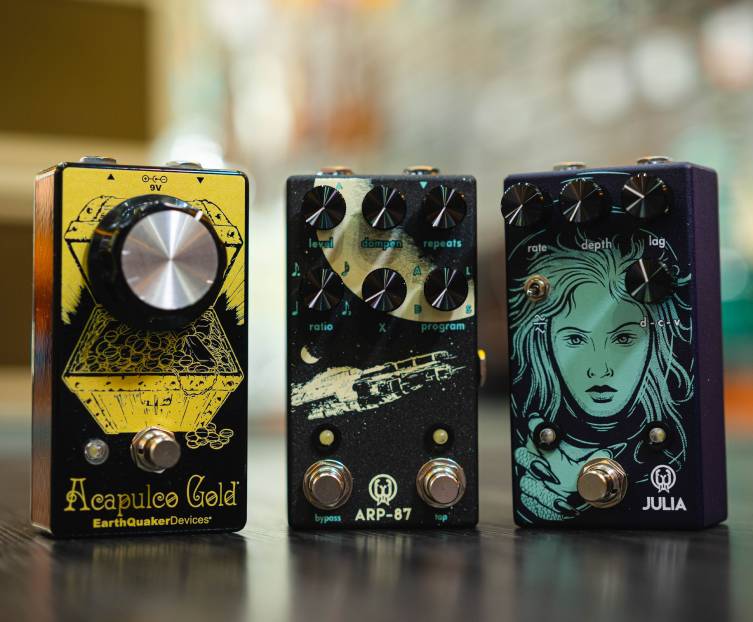
The only other guidance I’d offer is that the pedals you primarily stomp on need to be strong and reliable. Any cheap pedals that add unwanted noise to your chain should be removed and consigned to being ‘backups’ for emergency use only. If you find a cheap pedal that happens to be excellent, buy another one, and don’t tell everyone online or the price will jump up by hundreds overnight!
I’m being slightly facetious with that last one, but it is pretty crazy how much people attach to certain pedals and not others. If you use your ears, avoid the hype and tailor your choices to your own playing (let’s be clear: what John Mayer uses will never really matter to anyone except John Mayer), you can’t lose. Have fun, buy some cheap pedals, and splash out on some more expensive ones. You’ll develop your own opinions and create your own sound at the same time.




